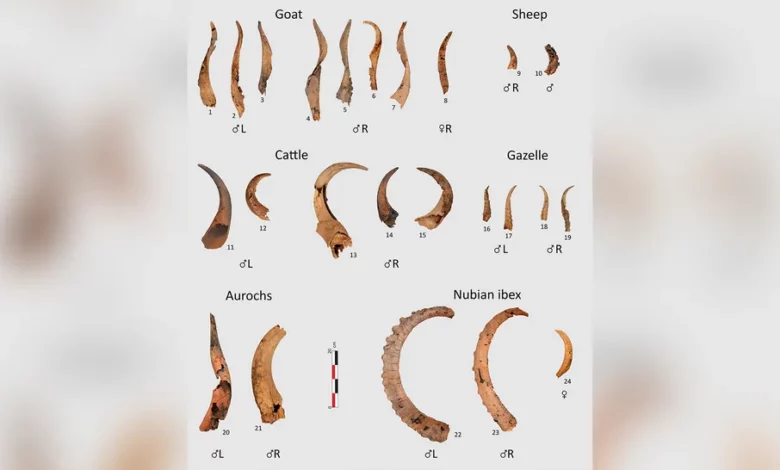7,000-Year-Old Animal Bones, Human Remains Found in Enigmatic Stone Structure in Saudi Arabia

Archaeologists excavating an ancient stone monument in Saudi Arabia have unearthed thousands of animal bones, as well as human remains belonging to at least nine individuals.
The discoveries suggest that people gathered at stone structures to perform rituals and activities in Saudi Arabia about 7,000 years ago. These rituals appear to have included depositing animal horns and skulls.
More than 1,000 prehistoric rectangular stone structures called mustatils (“rectangles” in Arabic) have been documented in Saudi Arabia, yet exactly when and why they were built have remained a mystery. In 2018, the Royal Commission for AlUla, a region in northwest Saudi Arabia, launched a project to document and study mustatils and other archaeological remains in the region.
The recently excavated mustatil measures 131 by 39 feet (40 by 12 meters); the stone walls are up to 6.6 feet (2 m) thick, but the original height of the walls, which have since eroded, is unclear.

At the center of a courtyard within the mustatil, there is a structure that may have functioned as a shrine, with two hearths where ceremonies may have taken place, the archaeologists wrote in a paper published in August in a supplement to the journal Proceedings of the Seminar for Arabian Studies.
Within the mustatil, archaeologists also found more than 3,000 fragments of animal remains that together weigh about 55 pounds (25 kilograms). These animal remains include hundreds of horns and heads of animals, including cattle and caprines such as goats. Other prehistoric sites in the Middle East also contain a multitude of cattle heads and horns, including a site in Yemen where a ring of cattle skulls was displayed, lead study author Wael Abu-Azizeh, a junior professor of archaeology at Lumière University Lyon 2, told Live Science. The animal bones were deposited between 5300 B.C. and 5000 B.C., the archaeologists wrote.
The human bones found in the mustatil come from at least nine people: two infants, five adults, an adolescent or young adult, and a child, the team wrote in the paper. The human remains date to a few centuries after the animal bones were placed in the mustatil. “It’s a collective burial,” and it’s unclear if the people buried there are related to the builders of the mustatil, Abu-Azizeh said.
Olivia Munoz, an archeo-anthropologist at the French National Center for Scientific Research (CNRS) who wasn’t involved with the study, praised the research and hopes that more details about the human remains will be published. “It would be interesting to know the distribution by bone type to help understand whether individuals were deposited whole or whether parts of the already decomposed skeleton could be brought into [the mustatil],” Munoz told Live Science in an email.
